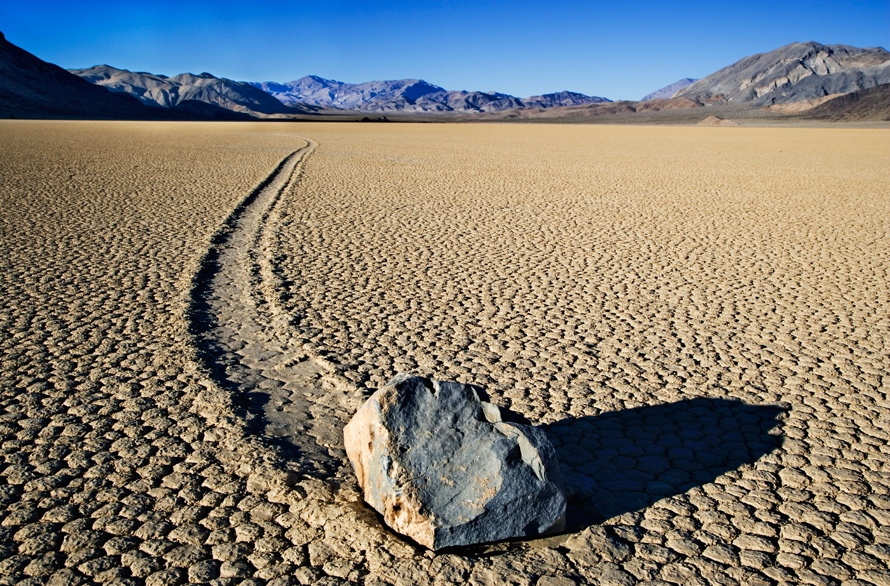
Please Contribute Today!
Woo hoo!!
Less than $5.3k to Go!
We can do this!!
FReepers ROCK!!
Posted on 08/29/2014 3:15:01 PM PDT by Brother Cracker
Ending a half-century of geological speculation, scientists have finally seen the process that causes rocks to move atop Racetrack Playa, a desert lake bed in the mountains above Death Valley, California. Researchers watched a pond freeze atop the playa, then break apart into sheets of ice that — blown by wind — shoved rocks across the lake bed.
Until now, no one has been able to explain why hundreds of rocks scoot unseen across the playa surface, creating trails behind them like children dragging sticks through the mud.
“It’s a delight to be involved in sorting out this kind of public mystery,” says Richard Norris, an oceanographer at the Scripps Institution of Oceanography in La Jolla, California, who led the research with his cousin James Norris, an engineer at Interwoof in Santa Barbara, California. The work was published on 27 August in PLoS ONE1.
(Excerpt) Read more at nature.com ...
Ping to Geological mystery solved?
Slippery rock ping.
They’re called turtles!
Is there a ‘turtles’ group?
That would be exciting..
Waiting for a freeze and good winds..
Just like ice fishing..
Ya NVR know what yur gonna catch
Cool stuff (in a very hot place). :-)

I don't believe it. The depth of the impression left behind suggests the rock is far too heavy to have been pushed by wind.
Reminds me of the unexplained spirals and lines all over the dry lakebed of Vernuekpan in South Africa:

 I do love a good mystery!
I do love a good mystery!
Its swamp gas!
I also am a skeptic of the ice theory.
Your video shows the result of a TYPHOON.
Are you implying there are no typhoons in death Valley?
Aye strong wind can move very heavy objects.. with surface volume. Rocks have very little area on which to push.
yeah, so what about rocks on ice?

Well, it’s not the rock itself that’s pushed by the wind but broken up sheets of ice. The flat ice pieces push the rocks along, or the rocks are embedded in them and scrape along the ground as the ice pieces are blown along. In other words the ice pieces sort of act like sails for the rocks.
Something else to keep in mind is that when this happens the ground is probably wet, not dry as in the pic. I know from experience that the ground out there turns into a slippery mud when it’s wet. This would act to lubricate the path that the rock moves along. Their theory seems plausible to me.
I’m implying nothing.
A motor vehicle being blown along the street by a typhoon, hurricane or tornado isn’t a very good example imo.
Disclaimer: Opinions posted on Free Republic are those of the individual posters and do not necessarily represent the opinion of Free Republic or its management. All materials posted herein are protected by copyright law and the exemption for fair use of copyrighted works.